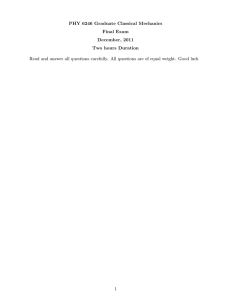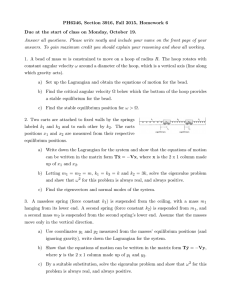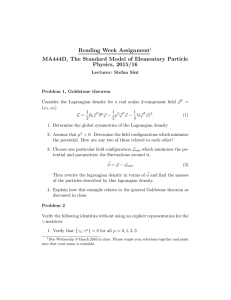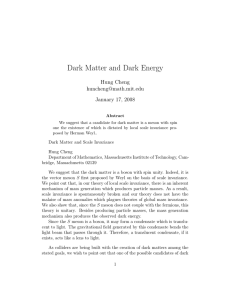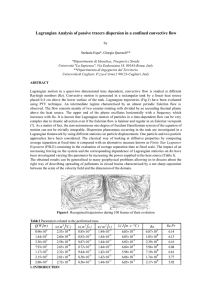PHY 6246 Graduate Classical Mechanics Final Exam December, 1995 Two hours Duration
advertisement
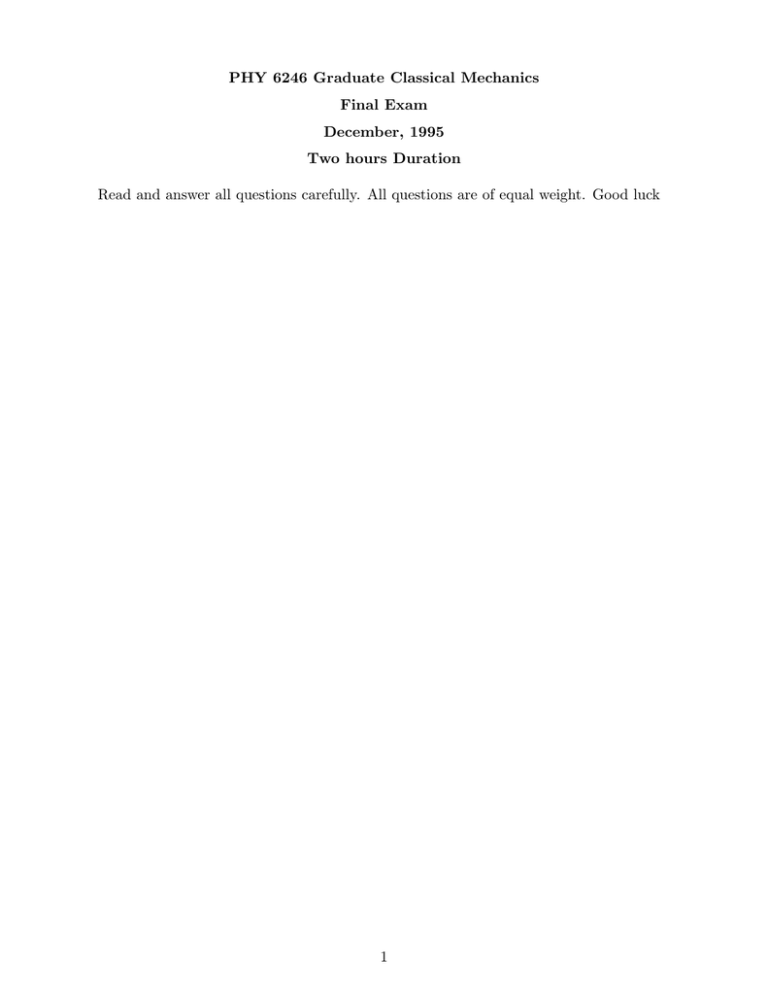
PHY 6246 Graduate Classical Mechanics Final Exam December, 1995 Two hours Duration Read and answer all questions carefully. All questions are of equal weight. Good luck 1 1 A circle lies in a vertical plane, touching the x-axis from above at the origin. A particle moves around the circle, subject to an attractive central force directed towards the coordinate origin. a) First, find an equation for the orbit, and then show that the force must vary as the inverse fifth power of the distance. b) Show that for this orbit of the particle, the energy must be zero. c) Find the period of the motion. d) Find ẋ, ẏ and v as functions of angle around the circle, and show that all three quantities are infinite as the particle goes through the force center. 2 2 Three (presumed massless) springs each have spring constant k and length l. The springs are allowed to fit together around a circle of circumference 3l, and a particle of mass m is attached at each join. Masses and springs are constrained to move around the circle in a horizontal plane. a) Write out the Lagrangian describing this system, and obtain the equation of motion. b) Determine the eigenfrequencies and normal modes of the system, and identify the physical nature of any zero frequencies. c) Suppose one of the springs has a change, δk, in its force constant, while the others remain unchanged. What are the changes in the eigenfrequencies, and what are the new normal modes? d) Now suppose that one of the particles experiences a change, δm, in its mass, while the other masses remain unaltered. Again, find the changes in the eigenfrequencies, and the corresponding normal modes? e) What property of the original system causes the normal modes of the systems with these perturbations also to be normal modes of the unperturbed system? 3 3 Consider the problem of a point projectile moving in a vertical plane under the influence of a uniform gravitational field. Assume the projectile starts at the origin at t = 0, with velocity v, and that it is launched at an angle α to the horizontal. a) Write down a Lagrangian describing the motion, and find the Hamiltonian. b) Write down and solve the Hamilton-Jacobi equation. c) Hence find, fully, the equation for the trajectory. d) Similarly, find the dependence of the coordinates on time during the flight of the projectile. 4 4 The Lagrangian density for a charged scalar meson field can be written as: L = ϕ̇ϕ̇∗ − c2 ∇ϕ∇ϕ∗ − µ20 c2 ϕϕ∗ , in which ϕ and ϕ∗ are to be taken as two independent field variables. a) Write out the Euler-Lagrange equations for this system, and obtain the equation of motion for ϕ. b) Find the canonical momenta, and obtain the complete Hamiltonian density. c) What physical dimension does µ0 have? What physical (quantum ?) characteristic of the meson field might it represent? d) Write out an expression for the conserved current jµ , and explain why it might be a valid current to include as a source term in Maxwell’s Equations. e) What property of the original Lagrangian density allows this current to be a conserved quantity? 5
